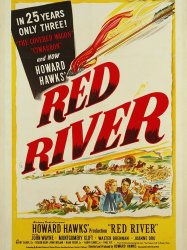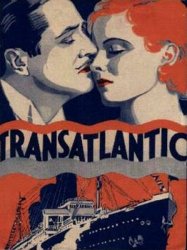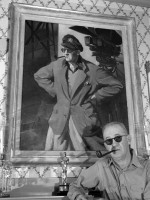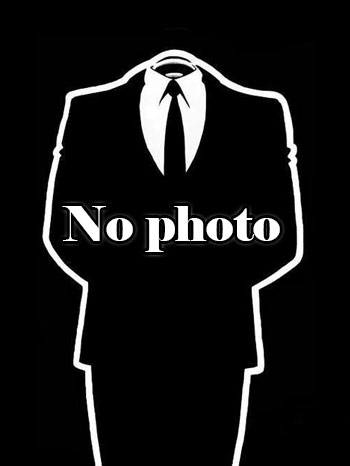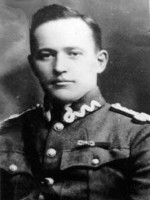Jack Murray is a Novel and Editor American born on 20 march 1909
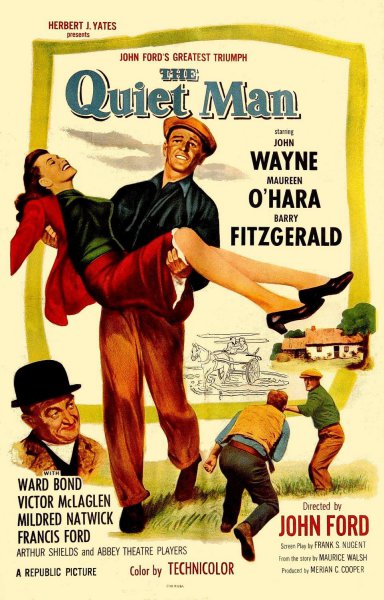
Jack Murray (1900-1961) was an American film editor with about fifty-five feature film credits between 1929 and 1961. Fifteen of these films were with the director John Ford. Their collaboration commenced with The Prisoner of Shark Island (1936), which was produced when both men were working at the 20th Century Fox studio. It encompassed such well-known films as The Quiet Man (1952) and The Searchers (1956), and ended only with Murray's death in 1961.
Essentially nothing has been published about Murray's early life or about the first phase of his career. In this phase, from 1929 - 1939, Murray had more than 30 feature film credits for the 20th Century Fox studio and its predecessors. Among his credits are Will Rogers' final film, In Old Kentucky (1935), and two films starring Shirley Temple (Curly Top (1935) and Poor Little Rich Girl (1936)). In addition to the film with Ford, in this period Murray edited films directed by Irving Cummings, H. Bruce Humberstone, and George Marshall, among others.
After 1939, there are no further feature films crediting Murray until 1947, when he edited a second film with Ford, The Fugitive (1947). This was also the first film produced following the reorganization of Ford's independent production company, Argosy Pictures, which Ford and his partners created to gain more independence of the major studios that controlled most film production in that era. Tag Gallagher notes that, while the film was a disastrous start for Argosy, "in terms of composition, lighting and editing, The Fugitive may be among the most enjoyable pictures." Murray's collaboration with Ford continued through seven more films from Argosy Pictures, which folded after producing The Sun Shines Bright (1953). After The Sun Shines Bright, Murray edited six additional films with Ford.
For his studio films after 1947, Ford worked with other editors as well as with Murray. Thus What Price Glory? (1952) was produced at 20th Century Fox and was edited by Dorothy Spencer, who had previously edited Ford's Stagecoach (1939) and My Darling Clementine (1946). Murray edited Mister Roberts (1955), which was produced by Warner Bros.. Murray also occasionally edited with other directors in this period (cf. Tarzan's Peril (1951), The Steel Claw (1961)). Murray's last film with Ford was Two Rode Together (1961); Murray died in 1961.
Among the most celebrated of the films edited by Murray were The Quiet Man (1952) and The Searchers (1956), both directed by Ford and produced independently of the major studios. The Quiet Man received multiple Academy Award nominations, although not for editing. The Searchers was in the first group of 25 films selected in 1989 for the US National Film Registry. It was ranked as the seventh greatest film ever made on the 2012 decennial international survey of film critics by the British Film Institute.. The period of Murray's collaboration with Ford after 1947 has been summarized by Tag Gallagher as one "distinguished by the vitality of its invention, at every level of cinema, but with particular intensity in montage, motion, and music." The term "montage" refers to the editing of these films. While the individual contributions of Ford and of Murray to the editing of the theatrical release versions of these films aren't well known, Murray was responsible for the first, editor's cuts. Ford rarely set foot in the cutting room. Michael A. Hoey worked as Murray's assistant on Sergeant Rutledge (1960). His memoir suggests that Ford did largely entrust the editing of his films to Murray; Hoey writes of the screening of Murray's cut for Ford that it "... went well with surprisingly few notes, but after all Jack Murray had been editing John Ford's films since 1936's The Prisoner of Shark Island and knew the Old Man's taste better than he did himself."
Murray was elected to membership in the American Cinema Editors shortly after its formation in 1950.
Cette même année 1936 sort Je n'ai pas tué Lincoln (avec Warner Baxter et Gloria Stuart) qui lui permet de collaborer pour la première fois avec son réalisateur, John Ford. Il le retrouve sur quatorze autres films à partir de Dieu est mort (1947, avec Henry Fonda et Dolores del Río), en passant notamment par La Charge héroïque (1949, avec John Wayne et Victor McLaglen), L'Homme tranquille (1952, avec John Wayne et Maureen O'Hara) et La Prisonnière du désert (1956, avec John Wayne et Jeffrey Hunter).
Le dernier des cinquante-sept films américains que Jack Murray monte est Les Deux Cavaliers du même John Ford (avec James Stewart et Richard Widmark), sorti le 26 juillet 1961, à peine moins de six mois après sa mort prématurée (à 60 ans).
En dehors des réalisations de John Ford, citons encore La Rivière rouge d'Howard Hawks et Arthur Rosson (1948, avec John Wayne et Montgomery Clift), Big Jim McLain d'Edward Ludwig (1952, avec John Wayne et Nancy Olson) et China Doll de Frank Borzage (1958, avec Victor Mature et Ward Bond).
Source : Wikidata
Jack Murray

- Infos
- Photos
- Best films
- Family
- Characters
- Awards
Birth name John Wyncoup Murray Jr.
Nationality USA
Birth 20 march 1909
Death 7 february 1961 (at 51 years)
Nationality USA
Birth 20 march 1909
Death 7 february 1961 (at 51 years)
Essentially nothing has been published about Murray's early life or about the first phase of his career. In this phase, from 1929 - 1939, Murray had more than 30 feature film credits for the 20th Century Fox studio and its predecessors. Among his credits are Will Rogers' final film, In Old Kentucky (1935), and two films starring Shirley Temple (Curly Top (1935) and Poor Little Rich Girl (1936)). In addition to the film with Ford, in this period Murray edited films directed by Irving Cummings, H. Bruce Humberstone, and George Marshall, among others.
After 1939, there are no further feature films crediting Murray until 1947, when he edited a second film with Ford, The Fugitive (1947). This was also the first film produced following the reorganization of Ford's independent production company, Argosy Pictures, which Ford and his partners created to gain more independence of the major studios that controlled most film production in that era. Tag Gallagher notes that, while the film was a disastrous start for Argosy, "in terms of composition, lighting and editing, The Fugitive may be among the most enjoyable pictures." Murray's collaboration with Ford continued through seven more films from Argosy Pictures, which folded after producing The Sun Shines Bright (1953). After The Sun Shines Bright, Murray edited six additional films with Ford.
For his studio films after 1947, Ford worked with other editors as well as with Murray. Thus What Price Glory? (1952) was produced at 20th Century Fox and was edited by Dorothy Spencer, who had previously edited Ford's Stagecoach (1939) and My Darling Clementine (1946). Murray edited Mister Roberts (1955), which was produced by Warner Bros.. Murray also occasionally edited with other directors in this period (cf. Tarzan's Peril (1951), The Steel Claw (1961)). Murray's last film with Ford was Two Rode Together (1961); Murray died in 1961.
Among the most celebrated of the films edited by Murray were The Quiet Man (1952) and The Searchers (1956), both directed by Ford and produced independently of the major studios. The Quiet Man received multiple Academy Award nominations, although not for editing. The Searchers was in the first group of 25 films selected in 1989 for the US National Film Registry. It was ranked as the seventh greatest film ever made on the 2012 decennial international survey of film critics by the British Film Institute.. The period of Murray's collaboration with Ford after 1947 has been summarized by Tag Gallagher as one "distinguished by the vitality of its invention, at every level of cinema, but with particular intensity in montage, motion, and music." The term "montage" refers to the editing of these films. While the individual contributions of Ford and of Murray to the editing of the theatrical release versions of these films aren't well known, Murray was responsible for the first, editor's cuts. Ford rarely set foot in the cutting room. Michael A. Hoey worked as Murray's assistant on Sergeant Rutledge (1960). His memoir suggests that Ford did largely entrust the editing of his films to Murray; Hoey writes of the screening of Murray's cut for Ford that it "... went well with surprisingly few notes, but after all Jack Murray had been editing John Ford's films since 1936's The Prisoner of Shark Island and knew the Old Man's taste better than he did himself."
Murray was elected to membership in the American Cinema Editors shortly after its formation in 1950.
Biography
Jack Murray débute comme monteur sur un film sorti en 1929 et travaille entre autres dans les années 1930 sur quatre réalisations de Raoul Walsh, dont Le Passeport jaune (1931, avec Elissa Landi et Lionel Barrymore). Durant cette même période, signalons aussi deux films réalisés par Irving Cummings ayant pour jeune vedette Shirley Temple, Boucles d'or (1935) et Pauvre petite fille riche (version de 1936).Cette même année 1936 sort Je n'ai pas tué Lincoln (avec Warner Baxter et Gloria Stuart) qui lui permet de collaborer pour la première fois avec son réalisateur, John Ford. Il le retrouve sur quatorze autres films à partir de Dieu est mort (1947, avec Henry Fonda et Dolores del Río), en passant notamment par La Charge héroïque (1949, avec John Wayne et Victor McLaglen), L'Homme tranquille (1952, avec John Wayne et Maureen O'Hara) et La Prisonnière du désert (1956, avec John Wayne et Jeffrey Hunter).
Le dernier des cinquante-sept films américains que Jack Murray monte est Les Deux Cavaliers du même John Ford (avec James Stewart et Richard Widmark), sorti le 26 juillet 1961, à peine moins de six mois après sa mort prématurée (à 60 ans).
En dehors des réalisations de John Ford, citons encore La Rivière rouge d'Howard Hawks et Arthur Rosson (1948, avec John Wayne et Montgomery Clift), Big Jim McLain d'Edward Ludwig (1952, avec John Wayne et Nancy Olson) et China Doll de Frank Borzage (1958, avec Victor Mature et Ward Bond).
Best films
Usually with
Filmography of Jack Murray (50 films)
Scriptwriter
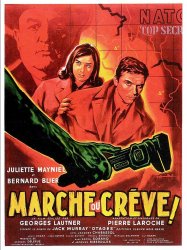
Do or Die! (1960)
, 1h40Directed by Georges Lautner
Genres Drama, Thriller, Adventure, Spy, Noir
Themes Spy films
Actors Bernard Blier, Juliette Mayniel, Daniel Sorano, Gisèle Sandré, Jacques Chabassol, Roger Dutoit
Roles Novel
Rating55%





Stefan, qui a appartenu naguère aux services secrets et qui aspire à une vie tranquille à l'ombre des corons, voit réapparaitre Milan, un ancien collègue. Il va falloir assumer dans le Limbourg, puis à Amsterdam, une ténébreuse affaire de documents qui intéressent aussi Lenzi, son ancien chef, maintenant à son compte. Une femme aux yeux troublants, Edith, se trouve également sur la route. Stefan, lancé malgré lui à corps perdu dans la bagarre, aura le dessus. Il peut ainsi retrouver Denise, son épouse chérie et ses chers puits de mines.
Editor
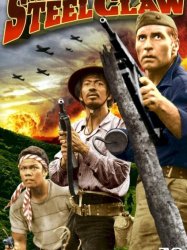
The Steel Claw (1961)
, 1h36Directed by George Montgomery
Origin USA
Genres Drama, War
Themes Seafaring films, Transport films, Political films
Actors George Montgomery
Rating48%





Capt. John Larsen, a marine, stationed in the Philippines, loses a hand in an accident and is discharged from the Corps. An American general is held captive by Filipino guerrillas behind Japanese lines and Larsen is later re-enlisted to rescue him. He fastens a steel prosthetic hook, the “steel claw” of the title, and embarks on the mission to rescue the general which leads him and his team, (his pal Santana and a band of guerillas), deep into the Philippines where love and death await them.
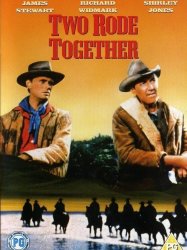
Two Rode Together (1961)
, 1h49Directed by John Ford
Origin USA
Genres Western
Themes Buddy films
Actors James Stewart, Richard Widmark, Shirley Jones, Linda Cristal, Andy Devine, John McIntire
Roles Editor
Rating66%





In the 1880s, Marshal Guthrie McCabe (James Stewart) is content to be the business and personal partner of attractive saloon owner Belle Aragon (Annelle Hayes), receiving ten percent of the profits. When relatives of Comanche captives demand that Army Major Fraser (John McIntire) free them, he uses a combination of army pressure and high pay to get the reluctant McCabe to take on the job of ransoming any he can find. He assigns Lieutenant Jim Gary (Richard Widmark) to accompany McCabe.

Sergeant Rutledge (1960)
, 1h51Directed by John Ford
Origin USA
Genres Drama, Action, Crime, Western
Themes Films about racism
Actors Woody Strode, Jeffrey Hunter, Constance Towers, Billie Burke, Juano Hernández, Willis Bouchey
Roles Editor
Rating73%





The film revolves around the court-martial of 1st Sgt. Braxton Rutledge (Strode), a "Buffalo Soldier" of the 9th U.S. Cavalry. His defense is handled by Lt. Tom Cantrell (Hunter), Rutledge's troop officer. The story is told through a series of flashbacks, expanding the testimony of witnesses as they describe the events following the murder of Rutledge's Commanding Officer, Major Dabney, and the rape and murder of Dabney's daughter, for which Rutledge is the accused.
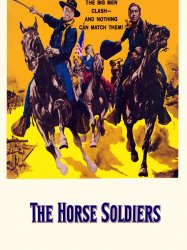
The Horse Soldiers (1959)
, 1h55Directed by John Ford
Origin USA
Genres War, Action, Adventure, Historical, Western
Themes Political films
Actors John Wayne, William Holden, Constance Towers, Hoot Gibson, Ken Curtis, Bing Russell
Roles Editor
Rating70%





A Union cavalry brigade, led by Colonel John Marlowe (John Wayne), is sent on a raid behind Confederate lines to destroy a railroad and supply depot at Newton Station. Before the war, Marlowe had been a railroad building engineer. With the troop is a new regimental surgeon, Major Henry Kendall (William Holden), who seems to be constantly at odds with his commander. Kendall is torn between duty and the horror of war.

China Doll (1958)
, 1h39Directed by Frank Borzage
Origin USA
Genres Drama, War, Romance
Themes Transport films, Aviation films, Political films
Actors Victor Mature, Ward Bond, Li Li-Hua, Stuart Whitman, Elaine Devry, Denver Pyle
Roles Editor
Rating60%





In 1943, Captain Cliff Brandon (Victor Mature) is a cargo aircraft pilot supplying the Allied troops fighting the Japanese in China. When he is not flying or training his new crew hard, he is usually drinking in the local bar.
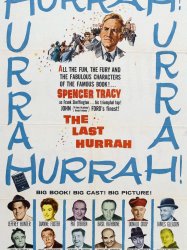
The Last Hurrah (1958)
, 2h1Directed by John Ford
Origin USA
Genres Drama, Comedy
Themes Politique, Political films
Actors Spencer Tracy, Jeffrey Hunter, Basil Rathbone, Dianne Foster, Pat O'Brien, Donald Crisp
Roles Editor
Rating72%





In "a New England city," Frank Skeffington (Spencer Tracy) plans to run for a fifth term. Skeffington rose from poverty in an Irish ghetto to become mayor and former governor, and is skilled at using the power of his office and an enormous political machine of ward heelers to receive support from his Irish Catholic base and other demographics. Rumors of graft and abuse of power are widespread, however, and the Protestant bishop, newspaper publisher Amos Force (John Carradine), banker Norman Cass (Basil Rathbone), and other members of the city's traditional elite the Irish Catholics replaced oppose Skeffington; so does Martin Burke (Donald Crisp), Catholic cardinal, Skeffington's childhood friend. They support the candidacy of Kevin McCluskey (Charles B. Fitzsimons), a young Catholic lawyer and war veteran with no political experience.
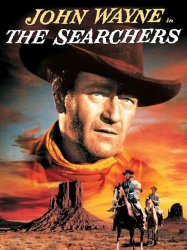
The Searchers (1956)
, 1h58Directed by John Ford, Gary Nelson
Origin USA
Genres Western
Actors John Wayne, Jeffrey Hunter, Vera Miles, Natalie Wood, Ward Bond, John Qualen
Roles Editor
Rating77%





It is 1868. Ethan Edwards (Wayne) returns after an eight-year absence to the home of his brother Aaron (Walter Coy) in the wilderness of West Texas. Ethan fought in the Civil War on the side of the Confederacy, and in the three years since that war ended he apparently fought in the Mexican revolutionary war as well. He has a large quantity of gold coins of uncertain origin in his possession, and a medal from the Mexican campaign that he gives to his eight-year-old niece, Debbie (played as a child by Lana Wood). As a former Confederate soldier, he is asked to take an oath of allegiance to the Texas Rangers; he refuses. As Rev. Captain Samuel Clayton (Ward Bond) remarks, Ethan "fits a lot of descriptions".
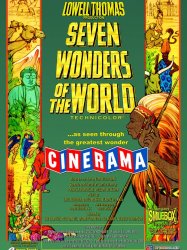
Seven Wonders of the World (1956)
Directed by Tay Garnett, Andrew Marton, Paul Mantz
Origin USA
Genres Documentary
Actors Paul Mantz
Rating70%





Documentaire de voyage pendant lequel Lowell Thomas, écrivain, explorateur et présentateur télévisuel, tente de mettre à jour la liste des Sept Merveilles du monde.

Mister Roberts (1955)
, 2h3Directed by Mervyn LeRoy, John Ford, Joshua Logan
Origin USA
Genres Drama, War, Comedy, Comedy-drama
Themes Military humor in film, Seafaring films, Transport films, Political films, Films based on plays, United States Armed Forces in films
Actors Henry Fonda, James Cagney, William Powell, Jack Lemmon, Betsy Palmer, Ward Bond
Roles Editor
Rating75%





In the waning days of World War II, the United States Navy cargo ship Reluctant and her crew are stationed in the "backwater" areas of the Pacific Ocean. The executive officer/cargo chief, Lieutenant Junior Grade Douglas A. "Doug" Roberts (Henry Fonda), tries to shield the dispirited crew from the harsh and unpopular captain, Lieutenant Commander Morton (James Cagney). Eager to join the fighting, Roberts repeatedly requests a transfer. Morton is forced by regulation to forward his requests, but refuses to endorse them, which means they are always rejected. Roberts shares quarters with Ensign Frank Thurlowe Pulver (Jack Lemmon). Pulver spends most of his time idling in his bunk and avoids the captain at all costs, so much so that Morton is actually unaware that the ensign is even part of the crew.

The Sun Shines Bright (1953)
, 1h30Directed by John Ford
Origin USA
Genres Drama, Comedy, Comedy-drama, Western
Actors Charles Winninger, John Russell, Arleen Whelan, Russell Simpson, Stepin Fetchit, Francis Ford
Roles Editor
Rating68%





Sur fond de campagne électorale en 1905 dans une petite ville du Kentucky, des hommes se déchirent pour une femme. Alcoolique notoire, le juge Priest se représente aux élections locales. Prenant la défense d'un jeune Noir accusé injustement d'un viol d’une Blanche et participe aux obsèques d’une prostituée notoire, ce qui lui vaut le respect des uns et l’hostilité des autres. De vieux secrets de familles resurgissent...
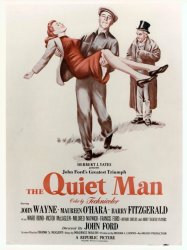
The Quiet Man (1952)
, 2h9Directed by John Ford
Origin USA
Genres Drama, Comedy, Comedy-drama, Romantic comedy, Romance
Themes Sports films, Martial arts films, Boxing films, Le boxe anglaise
Actors John Wayne, Maureen O'Hara, Barry Fitzgerald, Ward Bond, Victor McLaglen, Mildred Natwick
Roles Editor
Rating76%





In the 1920s, Sean Thornton (John Wayne), an Irish-born American from Pittsburgh, travels to Ireland to reclaim his family's farm and his birthplace in Inisfree. He meets and falls in love with the fiery Mary Kate Danaher (Maureen O'Hara), the sister of the bullying, loud-mouthed landowner Squire "Red" Will Danaher (Victor McLaglen). Danaher, who had wanted the farm himself, is angry that the Widow Tillane (herself angered by Danaher's admission that he had discussed her in the local pub) accepts Sean's bid, and retaliates by refusing consent for his sister to marry. Several town locals, including the Catholic priest, Father Lonergan (Ward Bond), conspire to trick him into believing that the wealthy Widow Tillane (Mildred Natwick) wants to marry him, but only if Mary Kate is no longer living in his house. After learning the truth on Sean and Mary Kate's wedding day, an enraged Will refuses to give his sister her dowry which is made up of a large sum of money and her family possessions passed down from her mother.
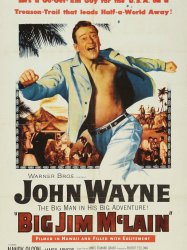
Big Jim McLain (1952)
, 1h30Directed by Edward Ludwig
Origin USA
Genres Drama, Thriller, Action, Adventure, Spy
Themes Spy films, Seafaring films, Transport films, Political films
Actors John Wayne, Nancy Olson, James Arness, Alan Napier, Veda Ann Borg, Hans Conried
Rating52%





House Un-American Activities Committee investigators Jim McLain and Mal Baxter come to Hawaii to track Communist Party activities. They are interested in everything from insurance fraud to the sabotage of a U.S. naval vessel.
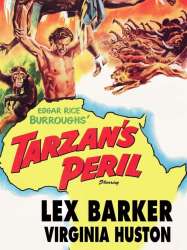
Tarzan's Peril (1951)
Directed by Byron Haskin
Origin USA
Genres Drama, Fantasy, Action, Adventure, Romance
Themes Films set in Africa, Films about children, Tarzan films
Actors Lex Barker, Virginia Huston, Dorothy Dandridge, George Macready, Glenn Anders, Alan Napier
Roles Editor
Rating57%





des bagnards évadés vendent des armes à une tribu indigène guerrière.

Rio Grande (1950)
, 1h45Directed by John Ford
Origin USA
Genres Drama, Action, Western
Actors John Wayne, Maureen O'Hara, Ben Johnson, Claude Jarman Jr., Harry Carey, Jr., Victor McLaglen
Roles Editor
Rating69%





In Rio Grande, Lt. Col. Kirby Yorke (John Wayne) is posted on the Texas frontier to defend settlers against depredations of marauding Apaches. Col. Yorke is under considerable stress between the Apaches using Mexico as a sanctuary from pursuit and by a serious shortage of troops of his command. The action of the movie is set in the summer of 1879 ("fifteen years after the Shenandoah").
 Connection
Connection
